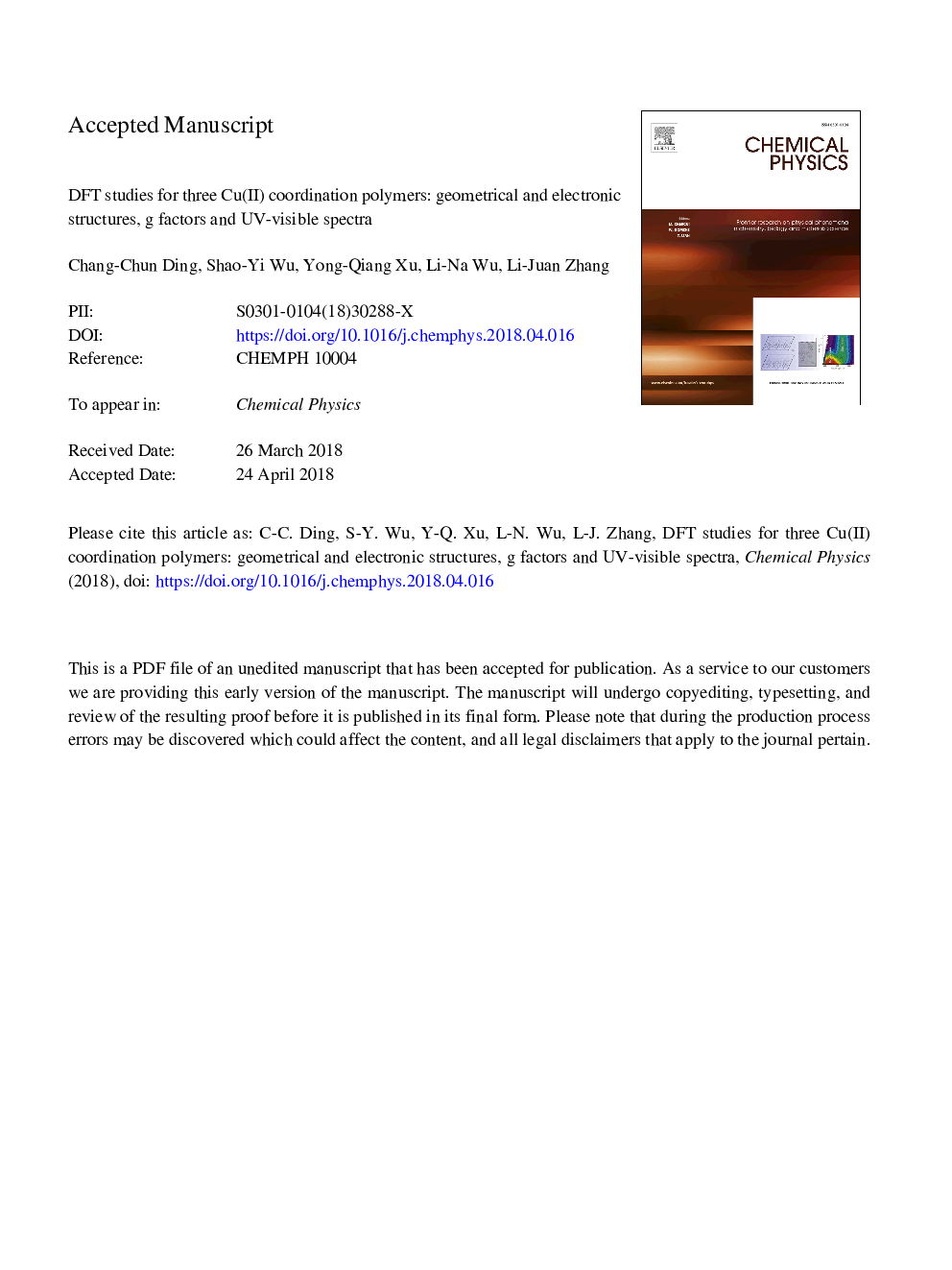| Article ID | Journal | Published Year | Pages | File Type |
|---|---|---|---|---|
| 7837147 | Chemical Physics | 2018 | 25 Pages |
Abstract
This work presents a systematic density functional theory (DFT) study for geometrical and electronic structures, g factors and UV-vis spectra of three Cu(II) coordination polymers (CPs) [Cu(XL)(NO3)2]n (1), {[Cu(XL)(4,4â²-bpy)(NO3)2]âCH3CN}n (2) and {[Cu(XL)3](NO3)2·3.5H2O}n (3) based on the ligand N,Nâ²-bicyclo[2.2.2]oct-7-ene-2,3,5,6-tetracarboxdiimide bi(1,2,4-triazole) (XL) with the linker triazole coordinated with copper to construct the CPs. For three CPs with distinct ligands, the optimized molecular structures with PBE0 hybrid functional and the 6-311g basis set agree well with the corresponding XRD data. Meanwhile, the electronic properties are also analyzed for all the systems. The calculated g factors are found sensitive to the (Hartree-Fock) HF character due to the significant hybridization between copper and ligand orbitals. The calculated UV-visible spectra reveal that the main electronic transitions for CP 1 contain d-d and CT transitions, while those for CPs 2 and 3 largely belong to CT ones. The present CPs seem difficult to adsorb small molecules, e.g., CP 1 with H2O and NO2 exhibit unfavorable adsorption and deformation structures near the Cu2+ site.
Keywords
Related Topics
Physical Sciences and Engineering
Chemistry
Physical and Theoretical Chemistry
Authors
Chang-Chun Ding, Shao-Yi Wu, Yong-Qiang Xu, Li-Na Wu, Li-Juan Zhang,
